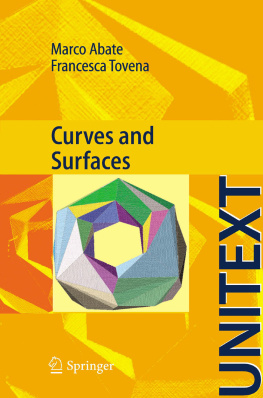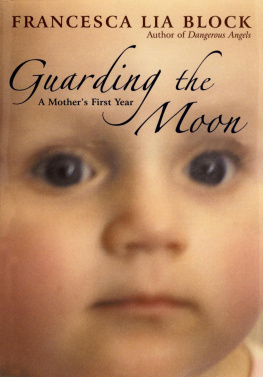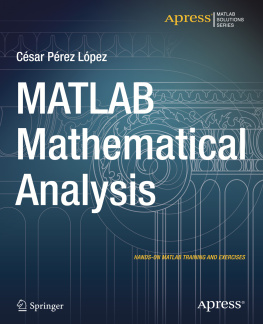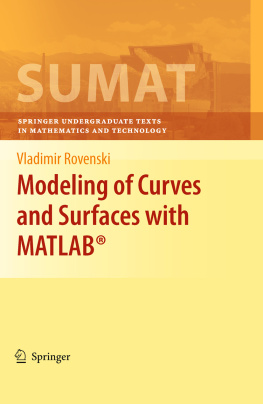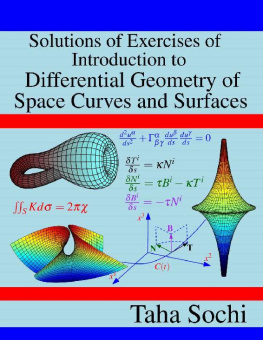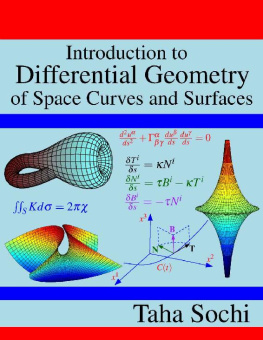Elementary geometry gives a fairly accurate and well-established notion of what is a straight line, whereas is somewhat vague about curves in general. Intuitively, the difference between a straight line and a curve is that the former is, well, straight while the latter is curved. But is it possible to measure how curved a curve is, that is, how far it is from being straight? And what, exactly, is a curve? The main goal of this chapter is to answer these questions. After comparing in the first two sections advantages and disadvantages of several ways of giving a formal definition of a curve, in the third section we shall show how Differential Calculus enables us to accurately measure the curvature of a curve. For curves in space, we shall also measure the torsion of a curve, that is, how far a curve is from being contained in a plane, and we shall show how curvature and torsion completely describe a curve in space. Finally, in the supplementary material, we shall present (in ) how to deal with curves in n when n 4.
1.1 How to define a curve
What is a curve (in a plane, in space, in n )? Since we are in a mathematical textbook, rather than in a book about military history of Prussian light cavalry, the only acceptable answer to such a question is a precise definition, identifying exactly the objects that deserve being called curves and those that do not. In order to get there, we start by compiling a list of objects that we consider without a doubt to be curves, and a list of objects that we consider without a doubt not to be curves; then we try to extract properties possessed by the former objects and not by the latter ones.
Example 1 ... Obviously, we have to start from straight lines. A line in a plane can be described in at least three different ways:
as the graph of a first degree polynomial: y = mx + q or x = my + q ;
as the vanishing locus of a first degree polynomial: ax + by + c =0;
as the image of a map f :2 having the form f ( t )=( t +, t +).
A word of caution: in the last two cases, the coefficients of the polynomial (or of the map) are not uniquely determined by the line; different polynomials (or maps) may well describe the same subset of the plane.
Example 1 ... If I is an interval and f : I is a (at least) continuous function, then its graph
surely corresponds to our intuitive idea of what a curve should be. Note that we have
that is a graph can always be described as a vanishing locus too. Moreover, it also is the image of the map : I 2 given by ( t )=( t , f ( t )).
Remark 1 ... To be pedantic, the graph defined in last example is a graph with respect to the first coordinate. A graph with respect to the second coordinate is a set of the form {( f ( t ), t )| t I }, and has the same right to be considered a curve. Since we obtain one kind of graph from the other just by permuting the coordinates (an operation which geometrically amounts to reflecting with respect to a line), both kinds of graphs are equally suitable, and in what follows dealing with graphs we shall often omit to specify the coordinate we are considering.
Example 1 ... A circle (or circumference ) with center ( x 0, y 0) 2 and radius r >0 is the curve having equation
Note that it is not a graph with respect to either coordinate. However, it can be represented as the image of the map : 2 given by
Example 1 ... Open sets in the plane, closed disks and, more generally, subsets of the plane with non-empty interior do not correspond to the intuitive idea of curve, so they are to be excluded. The set [0, 1][0, 1] \ 2, in spite of having an empty interior, does not look like a curve either.
Let us see which clues we can gather from these examples. Confining ourselves to graphs for defining curves is too restrictive, since it would exclude circles, which we certainly want to consider as curves (however, note that circles locally are graphs; we shall come back to this fact later).
The approach via vanishing loci of functions looks more promising. Indeed, all the examples we have seen (lines, graphs, circles) can be described in this way; on the other hand, an open set in the plane or the set [0, 1][0, 1] \ 2 cannot be the vanishing locus of a continuous function (why?).
So we are led to consider sets of the form
for suitable (at least) continuous functions f :, where 2 is open.
We must however be careful. Sets of this kind are closed in the open set , and this is just fine. But the other implication hold as well:
Proposition 1.1.6. Let n be an open set . Then a subset C is closed in if and only if there exists a continuous function f : such that C ={ x | f ( x )=0}= f 1(0).
Proof . It is enough to define f : by setting
where is the usual Euclidean norm in n . Indeed, f is obviously continuous, and x C if and only if f ( x )=0 (why?).
So, using continuous functions we get sets that clearly cannot be considered curves. However, the problem could be caused by the fact that continuous functions are too many and not regular enough; we might have to confine ourselves to smooth functions.







